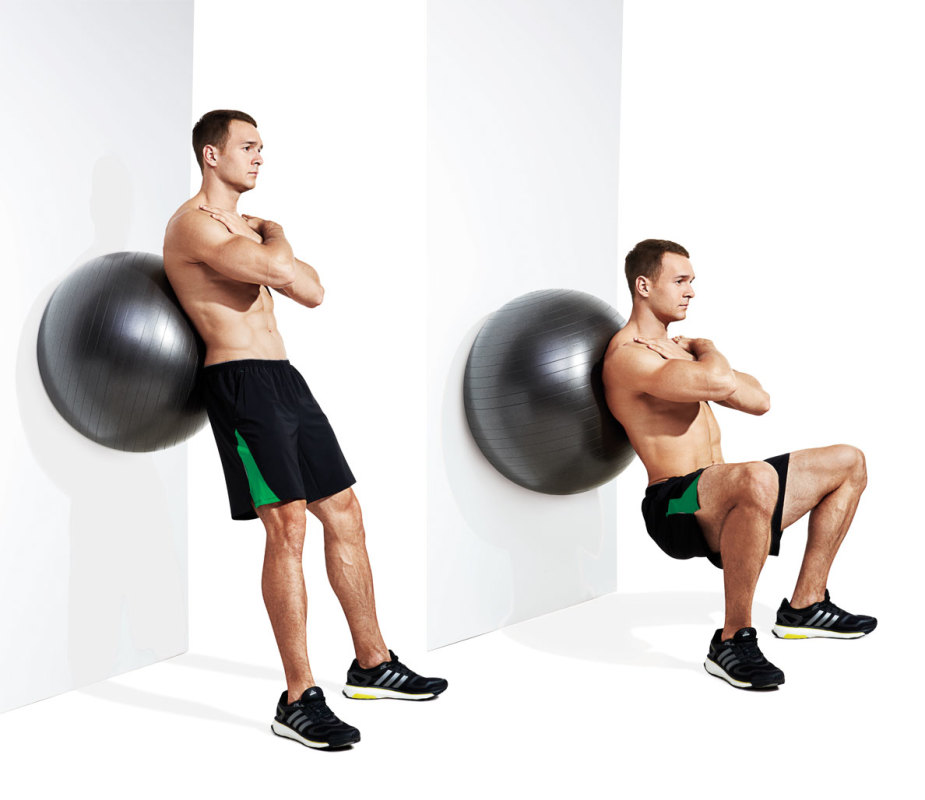Legs are one of the most stubborn body parts for men to see a drastic change in. If you're just starting off in a muscle-building regimen—hoping to bulk your chicken legs, pull off short running shorts, and get muscle definition like Cristiano Ronaldo—improving your leg musculature all begins with the basics.
"With any beginner program, less is more," says Liz Lowe, C.S.C.S., head program designer at Scorch Fitness, a high-intensity interval training gym in Sarasota, FL.
We asked Lowe to put together 10 of the most effective leg exercises for beginners. These will train your legs from all sides—so when putting together your own leg day workout, pick no more than five moves. Dedicated leg day workouts should be done no more than twice a week for recovery purposes, Lowe advises.
These beginner leg exercises will help you hone balance, strength, power, and muscle mass.
Related: Olympic Weightlifter Shares the Two Lifts Every Man Needs to Future-Proof His Body
Best Legs Exercises for Beginners at a Glance
- Swiss Ball Wall Squat
- Split Squat
- Stepup
- Bulgarian Split Squat
- Swiss Ball Hamstring Curl
- Dumbbell Deadlift
- Banded Lateral Walk
- Calf Raises
- Walking Lunges
- Glute Bridge
10 Best Legs Exercises for Beginners
1. Swiss Ball Wall Squat
Swiss Ball Wall Squat
Beth Bischoff
How to Do It
- Wedge a physio/Swiss ball between your lower back and the wall, to start.
- Lean back so your weight is pressing against the ball.
- "Transition your weight into your heels (you should be able to wiggle your toes) and squat down until your legs are parallel to the ground," Lowe says.
- "Keep your shoulders back and chest up as you do." Push through your heels and stand up the same way you came down, she adds.
- That's 1 rep.
- Perform 3 sets of 15 reps with 45 to 60 seconds of rest in between sets.
Why It Works
"This exercise teaches you correct squat form without risking the chance of injury [from squatting heavy]," Lowe explains. Make sure you keep your weight in your heels. This will protect your knees while squatting and ensure the right muscles are firing.
2. Split Squat (Lunge)
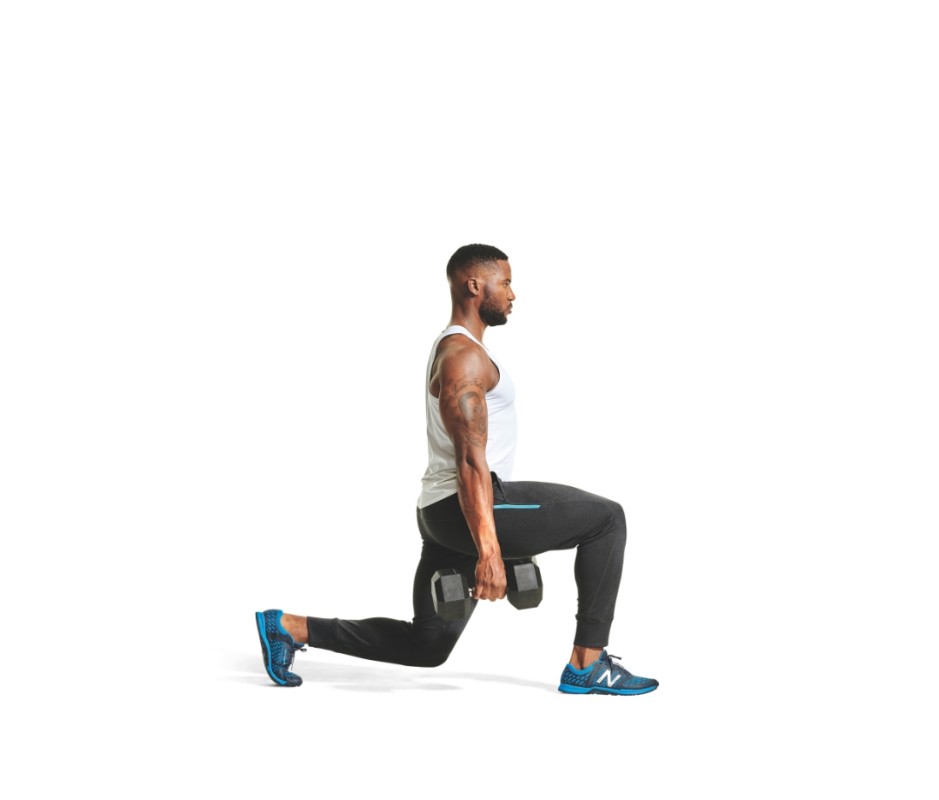
Split Squat (Lunge)
James Michelfelder
How to Do It
- Place one foot about three feet in front of the other with your toes facing the same direction, to start.
- "Pull your shoulders back and keep your chest up as you lower your back knee until it's one inch above the ground," Lowe says.
- Push through your front heel and straighten your back leg to come back up to the start position.
- Repeat all reps on one leg, then repeat on the other.
- Make sure you don't lean forward too far—think about maintaining a "proud chest" as you rise up.
- Complete 2 sets of 8 reps (each leg) with 60 seconds of rest between sets.
Why It Works
"This exercise trains your legs to work independently without fully challenging your balance since both feet remain grounded," Lowe explains. If it's too easy, hold dumbbells or kettlebells.
3. Stepup
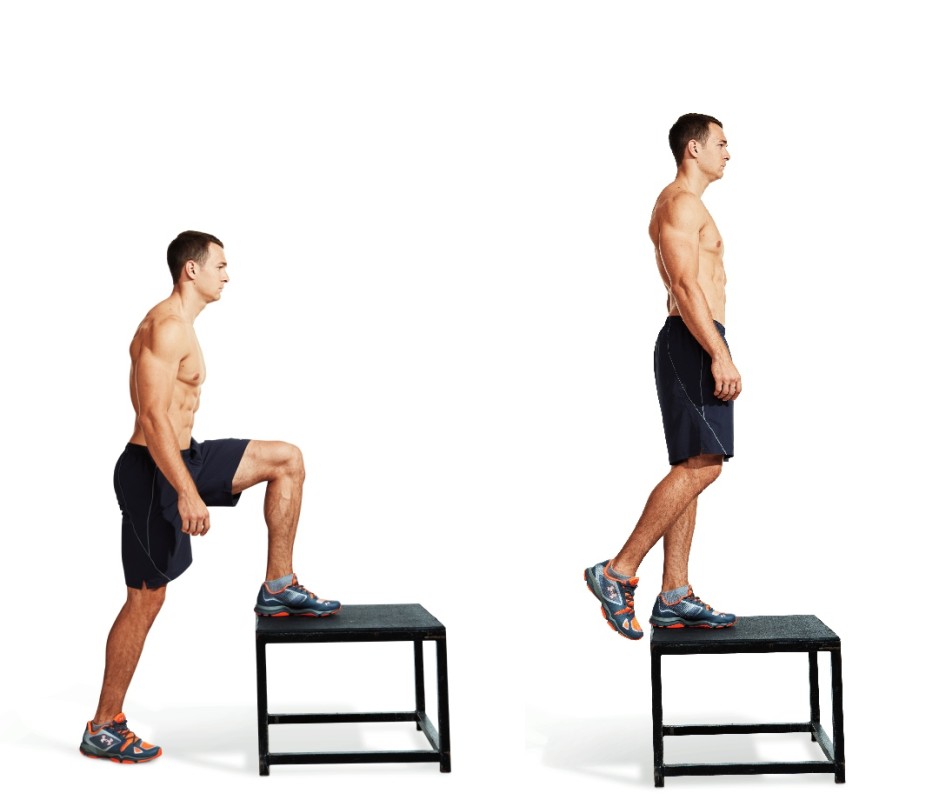
Stepup
Beth Bischoff
How to Do It
- Find a box, ledge, or step that's about 6 to 12 inches tall, to start.
- "Place one foot on the step and rise up, keeping your shoulders back and chest up," Lowe says.
- Step down and repeat with the other leg.
- Perform 2 sets of 6 reps (each leg) with 60 seconds of rest between sets.
Why It Works
"This exercise strengthens all the muscles in your legs and challenges balance as well," Lowe says. "An added perk: You indirectly work your core by keeping your torso upright when you step up." For a greater challenge, hold dumbbells or make the movement explosive by driving your trail leg up as you pump your arms (imagine you're sprinting or doing high-knees).
4. Bulgarian Split Squat
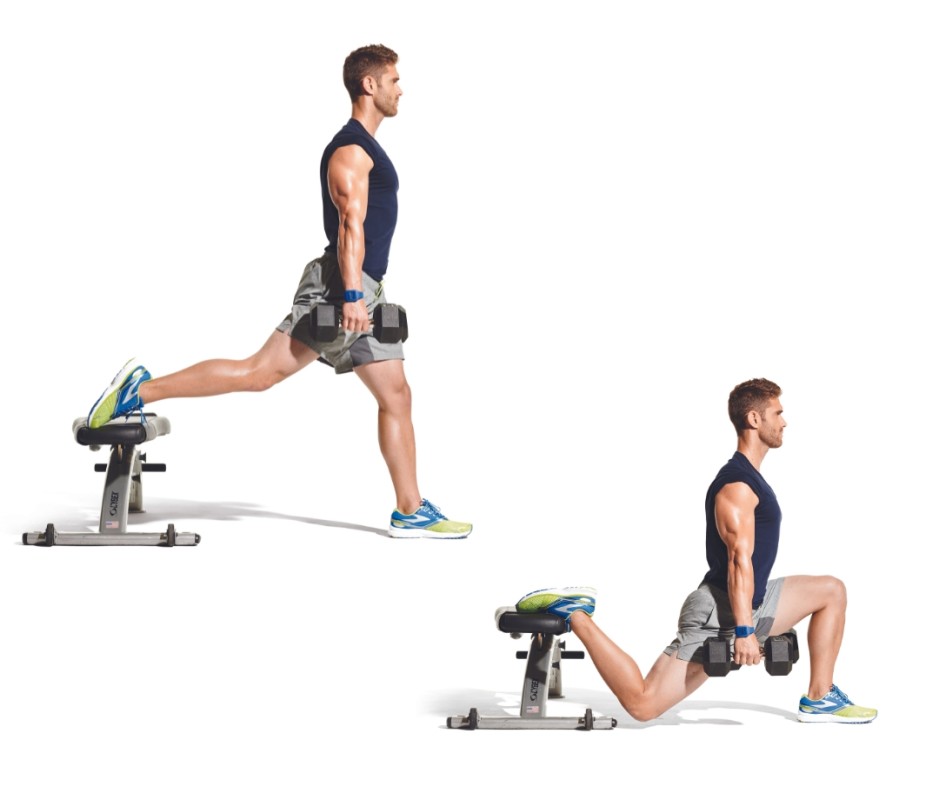
Bulgarian Split Squat
James Michelfelder
How to Do It
- Stand in front of a flat bench, facing away from the bench, to start.
- Rest the top of one foot on the bench, then transition all your weight onto the other leg. This is your "working leg."
- Slowly lower yourself down until your working leg's thigh is parallel to the floor.
- Push all your weight through your heel and stand.
- That's 1 rep.
- Repeat all reps on one side, then repeat on the other.
- Complete 2 sets of 10 reps (each leg) with 30 seconds of rest between sets.
Why It Works
The deceptively difficult Bulgarian split squat is used a lot in physical therapy as a way to strengthen the medial quad muscle and the muscles around the knee, Lowe says. Unilateral leg work ensures your muscle growth and strength is balanced between both legs. If it's too easy, hold dumbbells to increase your load.
5. Swiss Ball Hamstring Curl
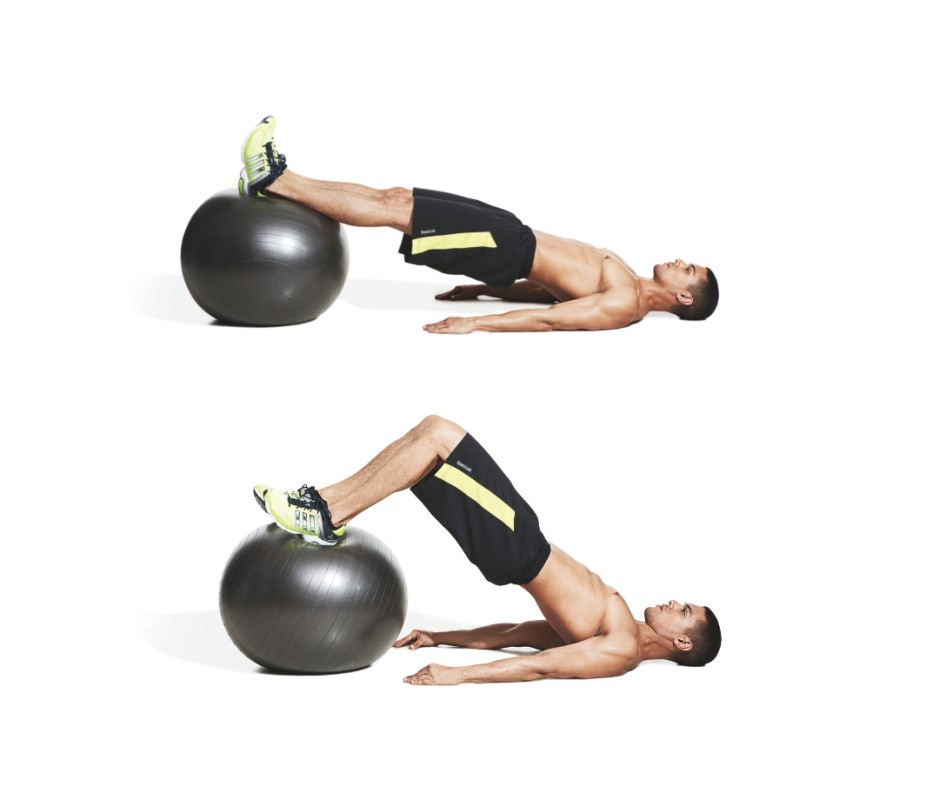
Swiss Ball Hamstring Curl
Beth Bischoff
How to Do It
- Lie on the ground with your feet up on a Swiss ball and your legs extended straight, to start.
- "Dig your heels into the ball and lift your hips as you bend your knees, pulling the ball toward your hips," Lowe says.
- "Slowly push the ball back out with your heels and lower your hips three-quarters of the way down."
- Perform 3 sets of 10 reps with 45 seconds of rest between sets.
Why It Works
This is one of the best exercises to light up your hamstrings. You'll feel an intense burn almost immediately. "The hamstrings are often neglected in training, but it's one of the most important muscles to train for injury prevention," Lowe says. Plus, you'll quickly add size to your legs by hitting your hamstrings.
Related: Best Squat Exercises to Build Muscular Legs
6. Dumbbell Deadlift
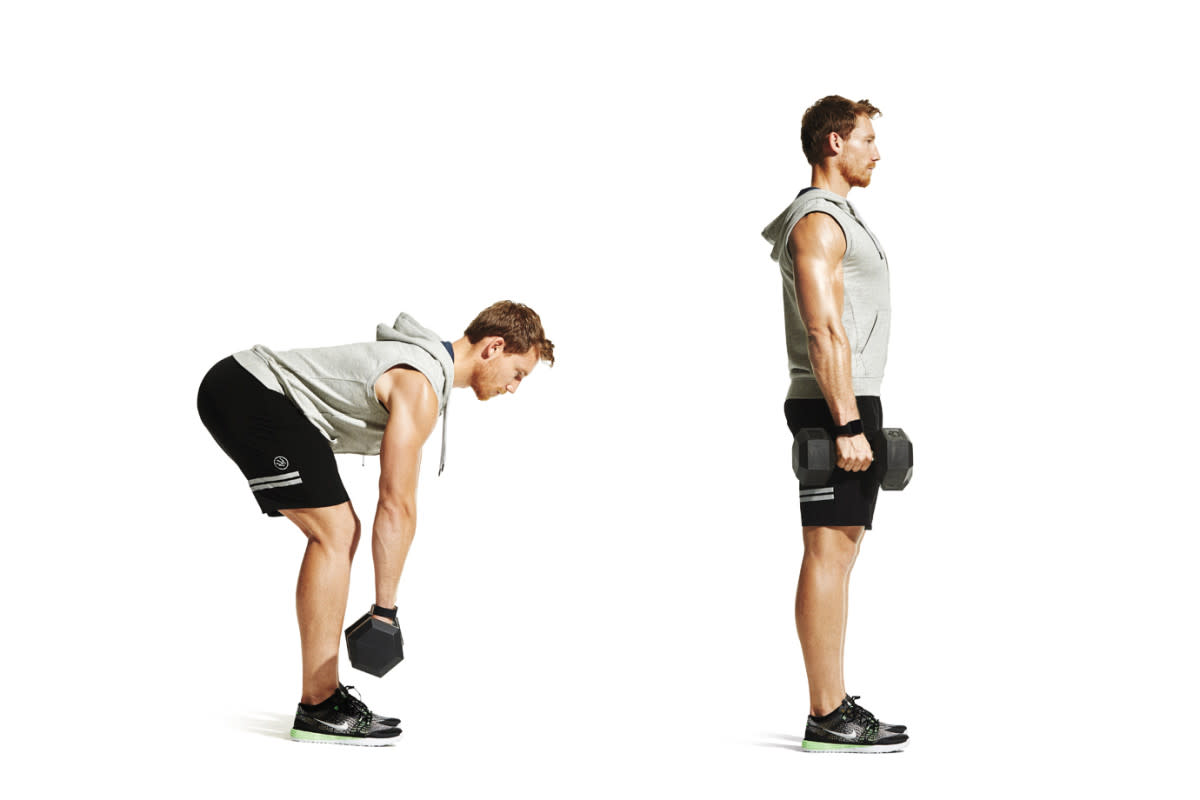
Dumbbell Deadlift
James Michelfelder
How to Do It
- To start, hold two dumbbells, positioning your hands so your palms face your body (aka "prone grip").
- Hinge at your hips and put a slight bend in your knees as you lower the weights down, just in front of your legs.
- Put your weight in your heels, keep your shoulders back, and lift your chest up a bit.
- Pause briefly at the bottom, then engage your hamstrings and glutes to pull your body back to standing.
- Push your hips forward and squeeze your glutes at the top of the movement.
- Repeat for 2 sets of 6 reps with 60 seconds of rest between sets, keeping your back flat the whole time.
Why It Works
"The deadlift is one of the best lower-body strengtheners, but using a barbell when you're first learning heightens your risk of injury," Lowe says. Dumbbells will let you perfect your form while still training your glutes and hamstrings (aka your "posterior chain"). Increase the weight as you get stronger, then progress to using a barbell.
7. Banded Lateral Walk
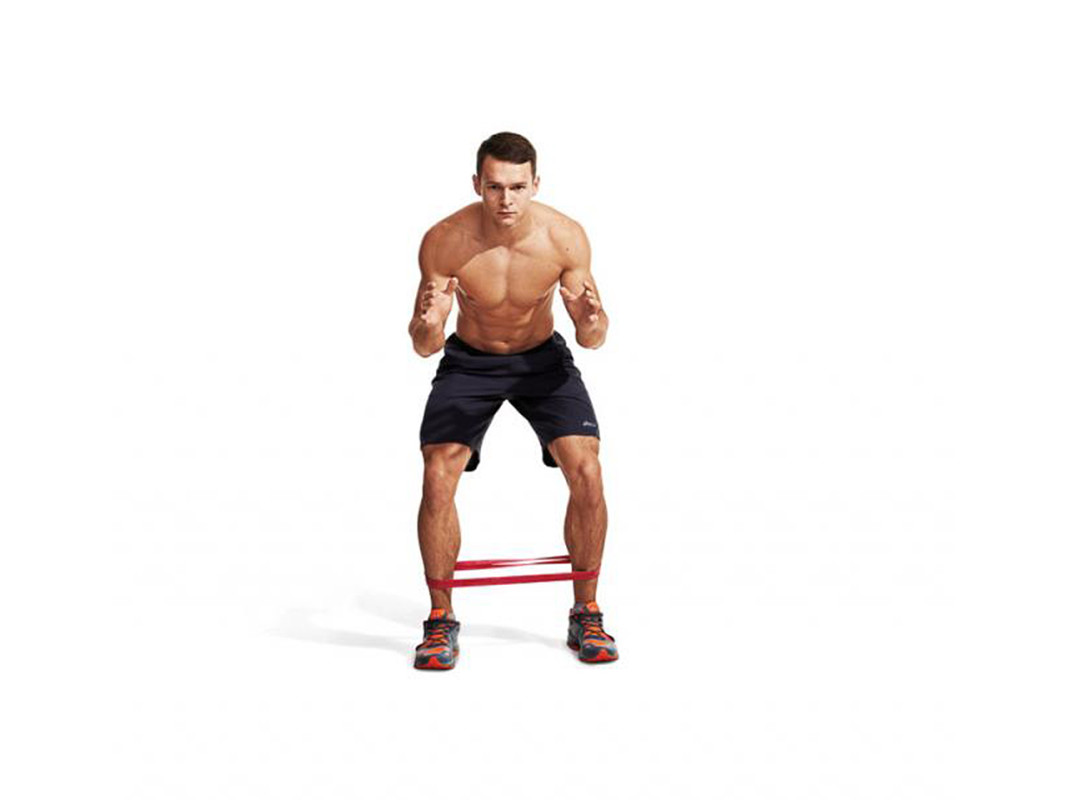
Banded Lateral Walk
Beth Bishoff
How to Do It
- Grab a light or medium resistance band, to start.
- Step in the band and position it mid-way up your shins.
- Squat down and take a wide step out to create resistance on the band.
- Step your other foot in 4-6 inches, so there's tension on the band.
- Repeat this lateral shuffle for all reps in one direction, then pause and complete in the other.
- Complete 2 sets of 12 reps (each leg), resting 45 seconds between sets.
Why It Works
“Most people forget to train their lateral stabilizers, which is critical to getting stronger in your other lifts and avoiding injury,” Lowe says.
8. Calf Raises
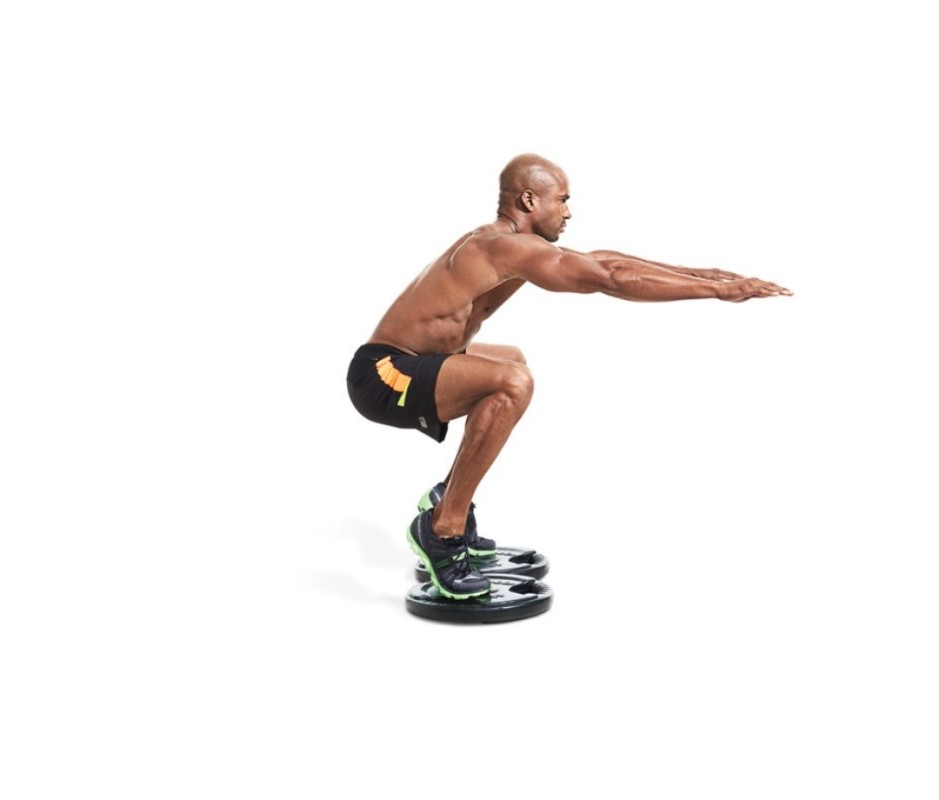
Calf Raises
Beth Bischoff
How to Do It
- Use a machine, stand on a step, or just stand on the ground, to start.
- With feet slightly narrower than shoulder-width apart, rise up onto your toes, then slowly lower yourself back down, Lowe says.
- Perform 3 sets of 20 reps with 30 seconds of rest between sets.
Why It Works
"This basic exercise strengthens the gastrocnemius and soleus muscles that make up your calf, and puts a positive stress on the Achilles tendon," Lowe explains. Training your Achilles is key because the Achilles tendon is crucial to long-term success in any workout program and is most likely to be injured when starting a new program, she adds.
9. Walking Lunges

Walking Lunges
Beth Bischoff
How to Do It
- Place one foot about three feet in front of the other, with toes facing the same direction, to start.
- Drop your back knee down until it's an inch from the ground—don't let it touch the ground—then drive through your front heel to step your feet together.
- Step out with your other leg, dropping the back knee down, then driving up and stepping together again.
- Keep alternating until you complete 2 sets of 6 reps (each leg) with 60 seconds of rest between sets.
Why It Works
"This is one of the most common leg exercises because it strengthens each leg individually, challenges your balance, and works all the muscles in your lower body," Lowe says.
10. Glute Bridge
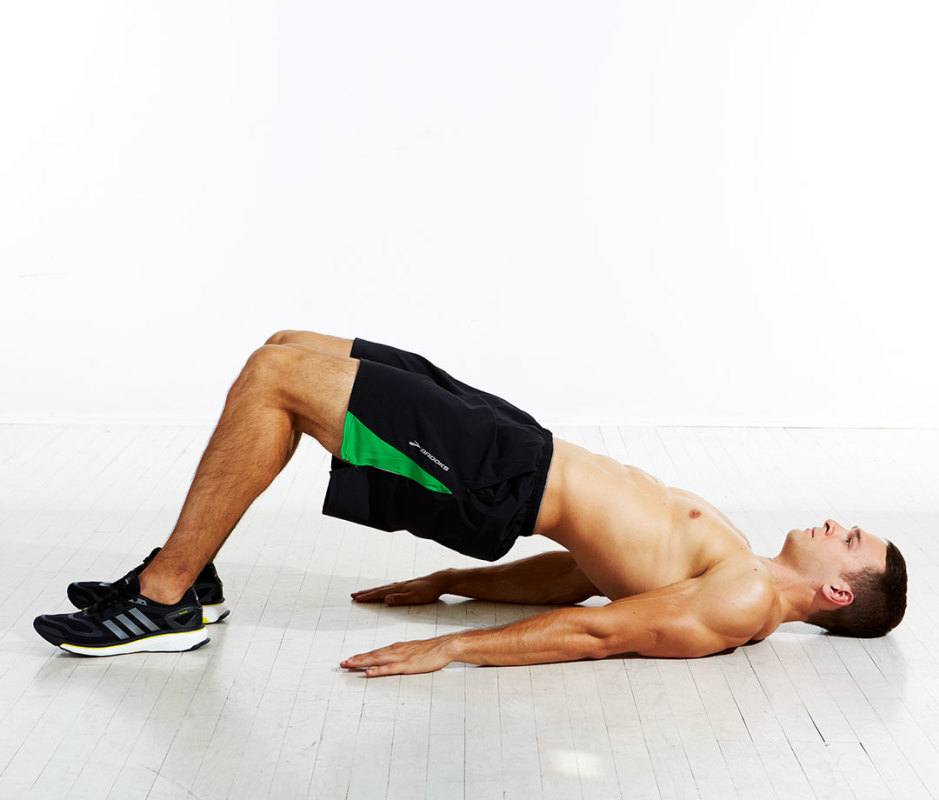
Glute Bridge
Beth Bischoff
How to Do It
- Lie down with knees bent and feet flat on the floor about shoulder-width apart, to start.
- Push your heels into the ground while raising your hips off the ground.
- At the top, squeeze your glutes and keep the abdominals tight to prevent arching in the low back.
- Lower your hips back down. To keep time under tension, hover your glutes just above the floor rather than resting.
- That's 1 rep.
- Perform 3 sets of 8 to 10 reps.
Why It Works
Glute bridges have a lot of the same benefits as squats without putting pressure on the lower back. They not only help you build muscle and strength in your glutes but can improve your core stability too.
Should I Train Leg Muscles as a Beginner?
Leg muscles are your body's largest muscle group. Without strong legs, we can't walk correctly, our posture suffers, and we're more prone to injury as we age. t to mention, no newbie gym-goer wants to walk around looking like T Rex (the saying "don't skip leg day" exists for a reason.) So, before you spend every weekday working on your upper body, make sure to add some beginner-friendly leg exercises to your workout regimen.
A beginner's leg workout should focus on a few fundamentals. You'll want exercises that train each leg individually (aka "unilaterally"), which ensures equal muscle development. (Imbalances can throw off the quality of your bigger, more complicated lifts down the road.)
You'll also want to train side-to-side (aka "laterally"), which helps build smaller stabilizer leg muscles crucial for injury prevention. Most importantly, you'll want resistance training moves that hit the major muscles in your posterior chain—like your glutes and your hamstrings—because they produce the most force in your body.
How Long Does It Take to Start Building Leg Muscles?
From your genetics to the length of time you've been working out and the muscle group you're trying to grow, building muscle takes time. While the timeline for gaining strength and muscle varies, most studies agree individuals (especially newbies) can see growth in as little as three to seven weeks when participating in consistent resistance training. Because your legs are the largest muscle group in your body, you might not see gains as quickly as you'd like, but with hard work and continuous training, you'll have mammoth legs in no time.
Related: Ryan Reynolds' 'Deadpool' Push Day Workout: Upper-Body Bulk

